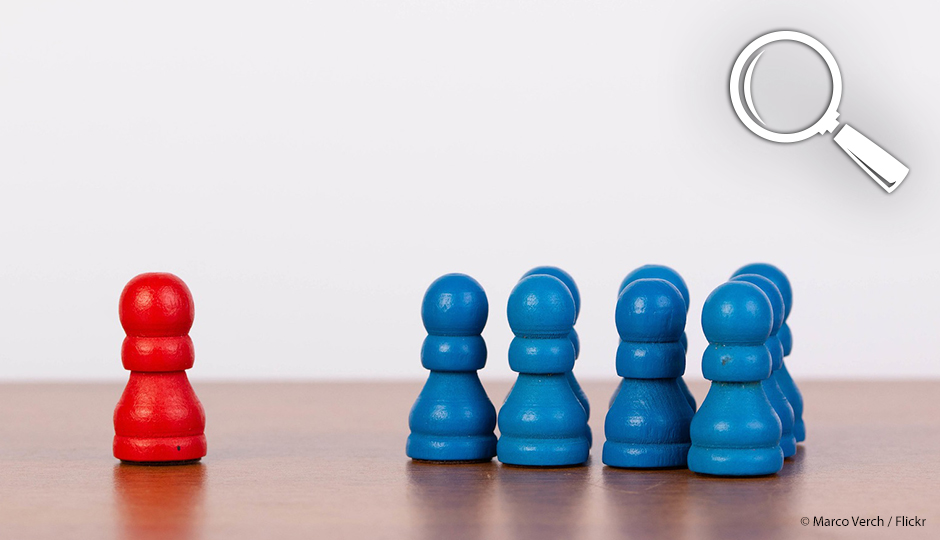Auteur : Agence Science Presse - Maxime Bilodeau
The herd immunity concept is evoked more than ever as lockdown measures are lifted in many countries, and it will be talked about often in the upcoming months. But is the concept well understood? It's time to sort out what we know or what remains to be proven.
We define herd immunity, or group immunity, when a population reaches a ''natural'' immunity to the virus. In other words, if people, as a majority, are infected once, the virus could not, in theory, continue propagating. This group immunity also occurs when a population is vaccined against the virus.
1. Once infected by the new coronavirus, is a person immune to it?
We don't know yet. However, in the case of the new coronavirus, there is a drawback about this collective immunity concept. The World Health Organization (WHO) reminded at the end of April that it’s not proven yet that people who are cured of COVID-19 and have developed antibodies are protected. It's even more unsafe to base a strategy of a gradual lift of lockdown measures on this idea, as some countries do, like Chili.
Recently, according to a Chinese study published in the scientific magazine Immunity, it seems there is a good immune response in patients that who cured from COVID-19, and an American study published on May 5th, but that hasn't been reviewed yet, reports that on a few hundred of people infected by SARS-CoV-2 in February, we could detect antibodies in 99 % of the cases a few weeks later. This last study now continues with a larger cohort of people. Based on previous studies realized with patients suffering from SARS-CoV-1- the virus responsible for SRAS in 2003 – the immunization would last around two years.
2. Without a vaccine, is it possible to achieve herd immunity?
We're not sure. These studies suggest that it would be possible to let the SARS-CoV-2 circulate freely in the population so that it can develop increased resistance. After a certain time, the virus wouldn't find enough hosts to infect and would simply disappear. However, this strategy is not without risks; in the case of the new coronavirus, we estimate that, if the contagion factor was of 3 (each person infecting 3 in average), it would mean that 70 % of the population would need to be immunized, naturally or with a vaccine for herd immunity. However, as the rare fragmentary studies mention a percentage of infected people that is inferior to 5 %, public health authorities are being careful and are waiting for a vaccine.
3. Is Sweden in the process of attaining herd immunity against COVID-19?
We're not sure. At the end of April, on public American radio NPR, the Ambassador of Sweden in the United States pretended that Stockholm would attain ''a certain immunity level'' within a month. She said that about 30 % of the inhabitants of the country's capital would have already been infected by the new coronavirus. Coincidence : soon after, a top executive of the WHO stated that ''if we want to go back to a certain normality, Sweden constitutes a model for the future.'' It reinforced the idea that keeping the stores open and allowing people to move freely was the right thing to do. However, we need to pinpoint the fact that in Sweden, as every other country, ignores the exact percentage of the population that needs to be infected to obtain herd immunity. In all cases, it's impossible to get to a high percentage of contaminated people without accepting a relatively high percentage of deaths.
4. Are tests to detect antibodies reliable? No.
If we ignore which percentage of the population has been infected, and if we are capable of detecting the antibodies that an individual created in reaction to an infection to SRAS-CoV-2, the logic seems to test at a large scale to detect these antibodies – what we call serological tests. According to a list by the Foundation for Innovative New Diagnostics, more than 200 serological tests would actually be available or are in development. Only 12 of these tests have been approved by the Food and Drug Administration, the equivalent of Health Canada in the United States. This low number is explained by their questionable reliability. Their sensitivity (there is no wrong diagnostic) would vary from 53 % to 89 %, according to a prepublished Chinese study, not yet reviewed by peers. Another prepublished scientific study reports barely better results, which are based on a small sample of 30 people.





